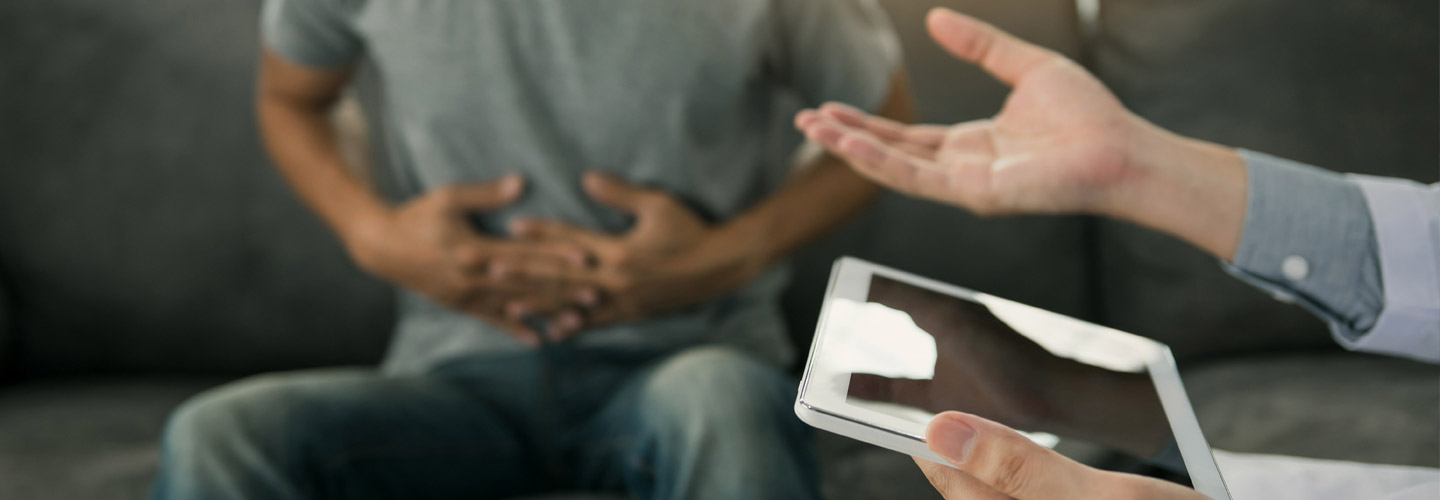
What is required to diagnose IBD?
If your doctor suspects you have Ulcerative Colitis or Crohn’s Disease you may have to undergo some tests and investigations to confirm the diagnosis. There is no single test that can be checked to make a diagnosis of IBD. Your doctor will use a combination of tests to confirm the diagnosis.
BLOOD AND STOOL TESTS
Blood tests can show whether you have inflammation (raised CRP or ESR) somewhere in your body and whether you are anaemic (low haemoglobin), both very common finding in patients with IBD. They can also show whether organs such as the liver and kidneys are functioning correctly and whether you are low on any other minerals or vitamins.
Your stool can also be tested for signs of bleeding or inflammation (calprotectin), and to check whether your diarrhoea is caused by an infection.
ENDOSCOPY
Endoscopy is the general name for a type of test which allows a specialist doctor (an endoscopist) to look directly at the inside of the digestive system, using an endoscope. If IBD is suspected referral to a medical or surgical gastroenterologist to undergo endoscopy tests is advisable.
In an endoscopy a doctor or specialist endoscopist uses an endoscope – a long thin, usually flexible, tube with a camera in its tip – to examine your digestive system. There are several types of endoscopy which can have different names according to the part of the gut being examined.
An upper GI endoscopy or gastroscopy is used to look at the upper part of your digestive system, such as the oesophagus and stomach. It is inserted through the mouth.
A colonoscopy or sigmoidoscopy is used to look at the colon. A sigmoidoscope (a short endoscope) or a colonoscope (a longer and more flexible endoscope) will be inserted through the anus (back passage) to examine the rectum and colon.
Endoscopies should not be painful but may be uncomfortable, so you may be given a sedative to help you relax. Biopsies (small samples of tissue) are often taken during an endoscopy. These can then be examined under a microscope to help confirm the diagnosis of IBD.
A capsule endoscopy is a special sort of endoscopy where you swallow a tiny camera (about the size of a small grape) which passes through the digestive system, taking photos of the inside of the gut. These photos are transmitted to a data recorder worn around the waist. The capsule is disposable and passes out of the body naturally in a bowel movement. Not all centers offer capsule endoscopy and it may not be suitable for everyone.
ABDOMINAL X-RAYS AND CT SCANS
There are lots of different types of X-rays used in IBD. Plain abdominal x-rays may be used in an emergency or in initially diagnosing people with IBD.
CT scans use a whole series of x ray images to build up a detailed picture of the body. The scanner is donut shaped, and X-rays are taken at different angles, the images produced are put together to produce 2D (two dimensional) cross sections of the body.
The digestive system does not always show up well on x-rays, so you may be given barium to help produce a clearer image. This is a harmless white substance which is not absorbed into the body, but instead forms a temporary coating on the inside of the gut. X-rays cannot pass though the barium, so this gives a clearer outline of the gut in x-ray images. The barium can be given as a drink to help show up problems in the functioning in the stomach or small intestine, or in an enema to show up inflammation in the colon.
ABDOMINAL ULTRASOUNDS
Ultrasound scanners work by using very high frequency sound waves to create an image. A handheld sensor is moved over the surface of the skin, and this sends out sound wave signals which ‘bounce off’ internal organs as an echo. The scanner then picks up the echoes and converts them into an image.
Ultrasound scans may be used to look for gall stones and kidney stones. They are also good at detecting collections of fluids and thickened and inflamed parts of the bowel wall. Ultrasound may also show up abscesses and fistulas (abnormal channels linking different parts of the bowel).
MRI SCANS
MRI scans are used to produce cross sectional images of the body. They are being increasingly used to investigate IBD, particularly in children, because they avoid the use of x-rays. Instead, they use strong magnetic fields and radio waves to create images of the inside of the body.
MRI scans are used to produce cross sectional images of the body. They are being increasingly used to investigate IBD, particularly in children, because they avoid the use of x-rays. Instead, they use strong magnetic fields and radio waves to create images of the inside of the body.
The MRI scanner looks like a long tube or tunnel, and you will be asked to lie on a moveable table which slides slowly inside this tunnel. MRI scans are a good way of looking at soft tissues such as muscles and the gut, as well as organs such as the liver. This is because it is particularly effective in detecting fistulas (abnormal channels linking different parts of the bowel), and abscesses, and distinguishing between active inflammation and scarring.
